Modulenotfounderror: No Module Named ‘Mysql’
Introduction
The ModuleNotFoundError is a common error encountered by developers when trying to import the ‘mysql’ module in their Python environment. This error indicates that the specified module named ‘mysql’ cannot be found, resulting in a failed module import. In this article, we will discuss the possible causes of this error and provide solutions for each scenario. Additionally, we will address frequently asked questions related to this error.
Possible Causes for the ModuleNotFoundError
1. Incompatible Python Environment
One possible cause for the ModuleNotFoundError is an incompatible Python environment. Different versions of Python can cause module import issues, especially when the required module is specifically designed for a particular version of Python. To resolve this, it is recommended to either install a compatible version of Python or create a virtual environment with the required Python version.
2. Absent MySQL Connector/Python Installation
If the ‘mysql’ module is not installed on your system, it will result in a ModuleNotFoundError. To resolve this issue, you need to install the MySQL Connector/Python library. This library provides the necessary functionality to connect and interact with a MySQL database using Python.
3. Wrong Module Name
A simple typographical error in the module name can also lead to a ModuleNotFoundError. It is crucial to double-check the spelling and case sensitivity of the module name in your code. Ensure that the module name matches exactly with the actual module name.
4. Incorrect Path Settings
When the module location is not included in the system’s Path variable, Python will be unable to locate and import the module, resulting in a ModuleNotFoundError. It is essential to verify the module’s location and update the system’s Path variable accordingly. By setting the correct path, Python will be able to locate and import the missing module successfully.
5. Unimported Module from the Standard Library
Some Python distributions do not include the ‘mysql’ module from the standard library by default. In such cases, you need to manually import the required modules from the standard library. This can be done by adding the appropriate import statements to your code.
6. Version Incompatibility with MySQL Server
Another potential cause for the ModuleNotFoundError is version incompatibility between the ‘mysql’ module and the MySQL server. If the module’s version does not match the version of the MySQL server, the import will fail. To resolve this issue, ensure that you are using a compatible version of the ‘mysql’ module that corresponds with your MySQL server version.
7. Namespace Conflicts with Other Installed Packages
Namespace conflicts can occur when multiple installed packages have similar module names. This can lead to conflicts and result in a ModuleNotFoundError. To overcome this issue, you can rename the conflicting modules or uninstall the packages causing the conflicts.
8. Corruption or Deletion of MySQL Connector Files
If the files related to the MySQL Connector/Python library have been corrupted or accidentally deleted, it will cause the ModuleNotFoundError. To resolve this, you need to reinstall the MySQL Connector/Python library, which will restore the missing files.
FAQs (Frequently Asked Questions)
Q1. How can I install the MySQL Connector/Python library?
To install the MySQL Connector/Python library, you can use pip, a package management system for Python. Open the command prompt and execute the following command:
“`
pip install mysql-connector-python
“`
Q2. I receive an error stating “ImportError: MySQL Connector Python c extension not available.” What does it mean?
This error message indicates that the C extension required by the MySQL Connector/Python library is not available. This can occur due to conflicting dependencies or issues with the installation. To resolve this, you can try reinstalling the MySQL Connector/Python library or ensuring that all dependencies are correctly installed.
Q3. How can I check the version of the MySQL Connector/Python library?
You can check the version of the MySQL Connector/Python library by importing it in your Python script and accessing its __version__ attribute. Here’s an example:
“`python
import mysql.connector
print(mysql.connector.__version__)
“`
Q4. Can I use the Conda package manager to install the MySQL Connector/Python library?
Yes, you can use the Conda package manager to install the MySQL Connector/Python library. Open the Anaconda prompt or any terminal with Conda installed and execute the following command:
“`
conda install -c anaconda mysql-connector-python
“`
Q5. How can I resolve the error “ImportError: No module named ‘mysql'”?
This error occurs when the ‘mysql’ module is not found. Make sure you have installed the correct library, such as the MySQL Connector/Python library or any other library that provides the ‘mysql’ module. Also, verify the correct import statement in your code.
Q6. What should I do if the error “Import mysql.connector could not be resolved” is displayed in my IDE?
If your IDE (Integrated Development Environment) shows this error, it means that it cannot find the MySQL Connector/Python library. Ensure that the library is installed correctly in your Python environment and that the correct path settings are configured in your IDE.
Conclusion
The ModuleNotFoundError: No module named ‘mysql’ occurs when the ‘mysql’ module cannot be found during the import process. In this article, we discussed the possible causes for this error and provided solutions for each scenario. We covered incompatible Python environments, absent MySQL Connector/Python installation, wrong module names, incorrect path settings, unimported modules from the standard library, version incompatibility with MySQL server, namespace conflicts with other packages, and corruption or deletion of MySQL Connector files. By following the solutions provided, you should be able to resolve the ModuleNotFoundError and successfully import the ‘mysql’ module in your Python projects.
No Module Named Mysql.Connector | Python Mysql Connection Error Solved | Modulenotfounderror
How To Install Mysql Module In Python3?
Python is a versatile programming language that offers a wide range of modules and packages to enhance its functionality. When it comes to working with databases, Python provides support for various database management systems, including MySQL. In this article, we will guide you through the process of installing the MySQL module in Python3, allowing you to interact with MySQL databases seamlessly.
Before we start, ensure that you have Python3 installed on your system. Additionally, make sure you have administrative rights to install packages.
Step 1: Install pip
Pip is a package manager for Python that allows us to easily install and manage external libraries and modules. If you don’t have pip installed on your system, you can install it by executing the following command:
“`
$ sudo apt install python3-pip
“`
Step 2: Install the mysql-connector-python module
The mysql-connector-python module provides Python with the ability to interact with MySQL databases. To install this module, run the following command:
“`
$ pip3 install mysql-connector-python
“`
Step 3: Verify the installation
Once the installation is complete, we can verify if the module has been successfully installed by running a simple script. Open your favorite text editor and create a new Python file, for example, `test.py`. Add the following lines to the file:
“`python
import mysql.connector
print(mysql.connector.__version__)
“`
Save the file, open your terminal or command prompt, navigate to the directory where the `test.py` file is located, and run the script using the following command:
“`
$ python3 test.py
“`
If the installation was successful, the version of the mysql-connector-python module will be displayed on the console.
Step 4: Connect to a MySQL database
To connect to a MySQL database from Python3, you need to provide the necessary credentials and create a connection object. Here is an example:
“`python
import mysql.connector
# Provide the necessary credentials
config = {
‘user’: ‘your_username’,
‘password’: ‘your_password’,
‘host’: ‘localhost’,
‘database’: ‘your_database’
}
# Create a connection object
conn = mysql.connector.connect(**config)
# Close the connection when you’re done
conn.close()
“`
Make sure to replace `’your_username’`, `’your_password’`, `’localhost’`, and `’your_database’` with your own database credentials.
FAQs:
Q1: What should I do if I encounter an error during the installation?
A1: If you encounter any errors during the installation process, make sure you have administrative rights and try using the `sudo` command before the installation command. Additionally, ensure that your pip version is up to date by running the following command: `pip3 install –upgrade pip`.
Q2: Can I install the mysql-connector-python module using an alternative method?
A2: Yes, besides using pip, you can download the module from the Python Package Index (PyPI) website (https://pypi.org/project/mysql-connector-python/) and install it manually. However, using pip is generally the recommended method as it takes care of dependencies and ensures an easier installation process.
Q3: Is it possible to install the mysql-connector-python module in Python2?
A3: Yes, the module supports both Python2 and Python3 versions. However, it is highly recommended to use Python3 as Python2 has reached its end-of-life and is no longer actively maintained.
Q4: Can I connect to a remote MySQL database using the mysql-connector-python module?
A4: Yes, you can connect to a remote MySQL database by providing the appropriate host name or IP address in the connection configuration.
Q5: What are some alternative modules to interact with MySQL in Python?
A5: Besides the mysql-connector-python module, there are other popular modules like PyMySQL, MySQLdb, and sqlalchemy that provide similar functionality. You can choose the module that best suits your requirements and preferences.
Conclusion:
Installing the mysql-connector-python module in Python3 is a straightforward process. By following the steps mentioned in this article, you will be able to install the module successfully and start interacting with MySQL databases using Python. Remember to provide the necessary credentials, create a connection object, and close the connection when you are done. If you encounter any issues, refer to the FAQs section or seek help from the Python community. Happy coding!
How To Install Connector Python Mysql?
Python is a powerful programming language that offers several libraries and modules to connect and interact with databases. One such library is the Python MySQL Connector, which enables communication between Python and MySQL databases. In this article, we will walk you through the steps to install the Python MySQL Connector and provide a comprehensive guide on using it effectively.
Step 1: Installing Python
Before installing the Python MySQL Connector, ensure that Python is installed on your system. You can download the latest Python version from the official Python website (https://www.python.org/downloads/). Follow the installation instructions provided and make sure Python is added to your system’s PATH.
Step 2: Installing MySQL Connector
To install the Python MySQL Connector, you need to use the “pip” package installer. Open your command prompt or terminal and run the following command:
“`
pip install mysql-connector-python
“`
Make sure you have an active internet connection, as pip will download and install the necessary files for you. After the installation is complete, you can begin using the Python MySQL Connector in your projects.
Step 3: Connecting to a MySQL Database
To connect to a MySQL database using the Python MySQL Connector, you need to provide the necessary connection details. Here’s an example of how to establish a connection:
“`python
import mysql.connector
# Provide the connection details
config = {
‘user’: ‘your_username’,
‘password’: ‘your_password’,
‘host’: ‘localhost’,
‘database’: ‘your_database_name’
}
# Establish the connection
connection = mysql.connector.connect(**config)
# Verify if the connection is successful
if connection.is_connected():
print(“Connected to MySQL database”)
# Close the connection
connection.close()
“`
Replace ‘your_username’, ‘your_password’, and ‘your_database_name’ with your actual credentials. This code establishes a connection to the MySQL database using the provided details, verifies the connection, and then closes it.
Step 4: Executing Queries
Once you have established a connection, you can execute SQL queries on the MySQL database. Here’s an example of how to execute a simple SELECT query:
“`python
import mysql.connector
# Establish the connection (same code as mentioned in Step 3)
# Create a cursor object to interact with the database
cursor = connection.cursor()
# Execute the SQL query
cursor.execute(“SELECT * FROM your_table_name”)
# Retrieve the results
results = cursor.fetchall()
# Loop through the results and print them
for row in results:
print(row)
# Close the cursor and connection
cursor.close()
connection.close()
“`
Replace ‘your_table_name’ with the actual name of the table you want to query. This code retrieves all rows from the specified table and prints them.
FAQs:
Q: What if I get an error while installing the Python MySQL Connector?
A: Make sure you have an active internet connection and check your firewall or antivirus settings. If the error persists, try upgrading your pip package manager by running `pip install –upgrade pip`.
Q: Can I connect to a remote MySQL database using the Python MySQL Connector?
A: Yes, you can specify the host address of the remote MySQL server in the connection details as `’host’: ‘your_remote_host_address’`.
Q: What if my MySQL server requires a port number?
A: By default, MySQL uses port 3306. If your MySQL server runs on a different port, specify it in the connection details as `’port’: your_port_number`.
Q: How can I execute parameterized queries using the Python MySQL Connector?
A: Parameterized queries help prevent SQL injection attacks. To execute parameterized queries, replace the query with `%s` placeholders and provide the values as a tuple or dictionary when executing `cursor.execute()`.
In conclusion, installing and using the Python MySQL Connector is straightforward and immensely helpful for effectively interacting with MySQL databases through Python. By following the installation steps and utilizing the provided code snippets, you can easily connect, execute queries, and fetch results from your MySQL database.
Keywords searched by users: modulenotfounderror: no module named ‘mysql’ MySQL Connector/Python, Pip install mysql, Pip install mysql-connector, Import mysql-connector could not be resolvedpylance, ImportError mysql connector Python c extension not available, Conda install mysql connector, MySQL Connector, Import MySQL connector-Python
Categories: Top 25 Modulenotfounderror: No Module Named ‘Mysql’
See more here: nhanvietluanvan.com
Mysql Connector/Python
Introduction:
MySQL Connector/Python is a highly popular and widely used Python driver for MySQL databases. It enables Python programs to connect to MySQL servers and execute SQL statements using a simple and intuitive Python API. In this article, we will explore the features, benefits, and usage of MySQL Connector/Python, along with addressing some frequently asked questions.
Features of MySQL Connector/Python:
1. Compatibility: MySQL Connector/Python is compatible with Python 2.7, 3.5, 3.6, and 3.7, making it a versatile and widely accessible tool for database connectivity in Python.
2. Pure Python Implementation: The Connector/Python is completely written in Python and does not require any additional C compilation, making it easy to install and use across different platforms.
3. Pythonic API: MySQL Connector/Python provides an intuitive and Pythonic API, allowing developers to interact with MySQL databases using Python objects and syntax familiar to Python developers. This enhances productivity and code readability.
4. Connection Pooling: The Connector/Python supports connection pooling, enabling efficient management and reuse of database connections, thus ensuring better performance and scalability.
5. Prepared Statements: Prepared statements enhance security by preventing SQL injection attacks. Connector/Python provides support for parameterized queries and prepared statements, making it safer to execute SQL queries.
6. Unicode Support: MySQL Connector/Python offers full Unicode support, ensuring seamless handling of character data across different character sets and collations.
7. Asynchronous Support: With the release of MySQL Connector/Python 8.0, developers can utilize asynchronous programming techniques using Python coroutines, making it easier to handle I/O operations and improve scalability.
8. Flask Integration: MySQL Connector/Python seamlessly integrates with Flask, a popular Python web framework, allowing developers to create powerful and efficient web applications with MySQL as the backend.
Benefits of Using MySQL Connector/Python:
1. Ease of Use: The intuitive and Pythonic API of MySQL Connector/Python simplifies database operations, reducing the learning curve for developers.
2. Performance: The connection pooling feature, along with optimized code execution, ensures faster and more efficient database operations, enhancing overall application performance.
3. Security: The support for prepared statements mitigates the risk of SQL injection attacks, offering better security for database interactions.
4. Compatibility: MySQL Connector/Python is compatible with multiple Python versions and MySQL server versions, providing flexibility and backward compatibility.
5. Community Support: Due to its popularity, MySQL Connector/Python has a large and active community, providing ample resources, documentation, and support for developers.
Usage of MySQL Connector/Python:
To begin using MySQL Connector/Python, you need to install it in your Python environment using the package manager, pip. The following steps outline the installation process:
Step 1: Open your command prompt or terminal.
Step 2: Run the command: “pip install mysql-connector-python”
Once the installation is complete, you can start integrating MySQL Connector/Python into your Python projects.
Here’s a simple example that demonstrates connecting to a MySQL database, executing a query, and fetching the results:
“`python
import mysql.connector
# Establishing a connection
cnx = mysql.connector.connect(user=’your_username’, password=’your_password’,
host=’localhost’, database=’your_database’)
# Creating a cursor object
cursor = cnx.cursor()
# Executing a query
query = “SELECT * FROM your_table”
cursor.execute(query)
# Fetching the results
results = cursor.fetchall()
# Printing the results
for row in results:
print(row)
# Closing the cursor and connection
cursor.close()
cnx.close()
“`
This example showcases the basic usage of MySQL Connector/Python. To explore the extensive functionalities and advanced features, it is recommended to refer to the official MySQL Connector/Python documentation.
FAQs:
Q1. Is MySQL Connector/Python free to use?
A1. Yes, MySQL Connector/Python is an open-source project released under the GPL license, making it free to use and distribute.
Q2. Can I connect to a remote MySQL server using MySQL Connector/Python?
A2. Yes, you can connect to both local and remote MySQL servers using MySQL Connector/Python. You simply need to specify the appropriate host and port information while establishing the connection.
Q3. Does MySQL Connector/Python support transactions?
A3. Yes, MySQL Connector/Python fully supports transactions. You can begin a transaction, commit changes, or roll back to the previous state using the connection object’s methods.
Q4. Can I use MySQL Connector/Python with other databases apart from MySQL?
A4. No, MySQL Connector/Python is specifically designed for connecting and working with MySQL databases only.
Q5. How do I handle error and exception handling with MySQL Connector/Python?
A5. MySQL Connector/Python provides comprehensive error handling capabilities. You can utilize try-except blocks to catch exceptions raised during database operations and take necessary actions based on different types of exceptions.
Conclusion:
MySQL Connector/Python is an essential tool for Python developers working with MySQL databases. It offers a wide range of features and benefits, including compatibility with multiple Python versions, optimized performance, security features, and an intuitive Pythonic API. By using MySQL Connector/Python, developers can easily connect to MySQL databases, execute queries, and perform various database operations without cumbersome coding. Its active community support and extensive documentation make it a popular choice for working with MySQL in Python.
Pip Install Mysql
Introduction:
Python is a highly versatile programming language widely used in various applications, including database management. The MySQL database is one such robust option for storing and managing large amounts of data. In this article, we will delve into the topic of installing MySQL using pip, an essential package manager for Python libraries.
Table of Contents:
1. Prerequisites for Installing MySQL via pip
2. Understanding MySQL Connector/Python
3. Installation Steps for MySQL using pip
4. Configuring MySQL Connection
5. Testing the MySQL Connection in Python
6. Common FAQs – Answers to Some Frequently Asked Questions
1. Prerequisites for Installing MySQL via pip:
Before installing MySQL using pip, it is important to ensure that you have the following prerequisites in place:
– Python 3.x installed on your system.
– pip installed and properly configured.
– An active internet connection to download the required packages.
2. Understanding MySQL Connector/Python:
To connect Python with the MySQL database, we utilize the MySQL Connector/Python library. It is a pure Python driver that enables connectivity and interaction between Python programs and the MySQL server. The library conforms to Python database API v2.0 standards (PEP 249).
3. Installation Steps for MySQL using pip:
Let’s now cover the step-by-step installation process for MySQL using pip.
Step 1: Open your command-line interface or terminal.
Step 2: Use the following command to install MySQL Connector/Python via pip:
pip install mysql-connector-python
4. Configuring MySQL Connection:
After successfully installing the MySQL Connector/Python package, the next step is to configure the MySQL connection parameters in your Python script. These parameters usually include host, user, password, database, and port.
Below is an example of a sample connection configuration:
“`python
import mysql.connector
# Establishing database connection
mydb = mysql.connector.connect(
host=”localhost”,
user=”yourusername”,
password=”yourpassword”,
database=”yourdatabase”,
port=”yourport”
)
“`
Remember to replace the placeholders (‘yourusername’, ‘yourpassword’, ‘yourdatabase’, ‘yourport’) with your relevant MySQL connection details.
5. Testing the MySQL Connection in Python:
To verify that your MySQL connection is established successfully, you can execute a simple test query.
The following code snippet demonstrates how to perform a test query using the previously established connection:
“`python
import mysql.connector
# Establishing database connection
mydb = mysql.connector.connect(
host=”localhost”,
user=”yourusername”,
password=”yourpassword”,
database=”yourdatabase”,
port=”yourport”
)
# Creating a cursor object
cursor = mydb.cursor()
# Executing a test query
cursor.execute(“SELECT DATABASE()”)
# Fetching the result
result = cursor.fetchone()
print(“Connected to the database:”, result)
“`
The output should display the database name to confirm a successful connection.
6. Common FAQs – Answers to Some Frequently Asked Questions:
Q: What is pip?
A: Pip is a package management system used to install and manage Python libraries, also known as packages. It simplifies the process of downloading, installing, and updating required libraries.
Q: What is MySQL Connector/Python, and why is it essential?
A: MySQL Connector/Python is a Python driver that enables connection and interaction between Python programs and the MySQL server. It provides developers with a convenient way to manage databases, execute queries, and handle result sets.
Q: Why should I use pip to install MySQL Connector/Python?
A: Using pip to install MySQL Connector/Python ensures that you have the latest version of the library available and that all dependencies are automatically resolved, simplifying the installation process.
Q: Can I install MySQL Connector/Python on any operating system?
A: Yes, MySQL Connector/Python supports multiple operating systems, including Windows, macOS, and various Linux distributions.
Q: What if pip install mysql-connector-python fails?
A: Ensure that your pip and Python installations are up to date. Additionally, check your internet connection and make sure that your firewall is not blocking the installation. If the problem persists, consult the documentation or seek assistance through MySQL community channels.
Conclusion:
In this article, we explored the process of installing MySQL using pip, a fundamental package manager for Python libraries. We discussed the prerequisites for installation, the role of MySQL Connector/Python, configuration steps, and testing the MySQL connection in Python. By following these instructions, you can establish a seamless connection between Python applications and the MySQL server, enabling efficient database management.
Pip Install Mysql-Connector
In the world of Python programming, connecting to databases is a common task. When it comes to working with MySQL databases, the mysql-connector package is a widely-used choice. In this article, we will explore the functionality of the mysql-connector package and provide a step-by-step guide on how to install it using the pip package manager.
What is Pip?
Before diving into the installation process, let’s briefly explain what pip is. Pip is a package manager for Python that allows developers to easily install and manage Python libraries or packages. It is the standard package manager for Python and comes pre-installed with most Python distributions.
What is mysql-connector?
The mysql-connector package is a Python driver that provides an interface for connecting to, querying, and managing MySQL databases. It is written in pure Python and does not require any additional dependencies. With its simple and intuitive API, mysql-connector simplifies the process of interacting with MySQL databases from Python programs.
Installing mysql-connector using pip
Now that we have an understanding of what pip and mysql-connector are, let’s get into the step-by-step process of installing mysql-connector using pip:
Step 1: Open your command-line interface
Open your preferred command-line interface, such as the terminal on macOS and Linux, or the Command Prompt on Windows.
Step 2: Check if pip is installed
To verify if pip is installed, enter the following command:
“`
pip –version
“`
If pip is installed, it will display the version number. If not, you will need to install pip first before proceeding.
Step 3: Install mysql-connector
To install mysql-connector, use the pip install command followed by the package name:
“`
pip install mysql-connector
“`
Pip will download the latest version of mysql-connector from the Python Package Index (PyPI) and install it on your system.
Step 4: Verify the installation
To ensure that mysql-connector is successfully installed, you can import it in a Python shell or a Python script:
“`python
import mysql.connector
“`
If no errors are shown, that means the installation was successful.
Frequently Asked Questions (FAQs)
Q1: Can I install mysql-connector using a requirements.txt file?
Yes, you can specify mysql-connector as a dependency in a requirements.txt file. Simply add the following line:
“`
mysql-connector
“`
Then, you can install all the dependencies listed in the requirements.txt file by running the command:
“`
pip install -r requirements.txt
“`
Q2: Does mysql-connector support Python 3?
Yes, mysql-connector supports Python 3.x versions. It is fully compatible with the latest Python releases, making it suitable for modern Python projects.
Q3: Are there any alternative packages to mysql-connector?
Yes, there are a few alternative packages for connecting to MySQL databases, such as pymysql and pyodbc. These packages provide similar functionality but differ in implementation and performance.
Q4: Can I use mysql-connector with other database systems?
No, mysql-connector is specifically designed for connecting to and working with MySQL databases. If you need to work with other database systems like PostgreSQL or SQLite, you will need to use their respective Python drivers.
Q5: Does mysql-connector support asynchronous programming?
Yes, mysql-connector supports asynchronous programming using the Python `asyncio` module. This allows you to write non-blocking, concurrent code to interact with your MySQL database.
In conclusion, the mysql-connector package provides an easy and efficient way to connect to MySQL databases in Python. By following the steps outlined in this article, you can quickly install mysql-connector using pip and start working with MySQL databases in your Python projects. Whether you are a beginner or an experienced developer, mysql-connector simplifies the process of database connectivity and management, making it a valuable tool in your Python toolkit.
Images related to the topic modulenotfounderror: no module named ‘mysql’

Found 11 images related to modulenotfounderror: no module named ‘mysql’ theme









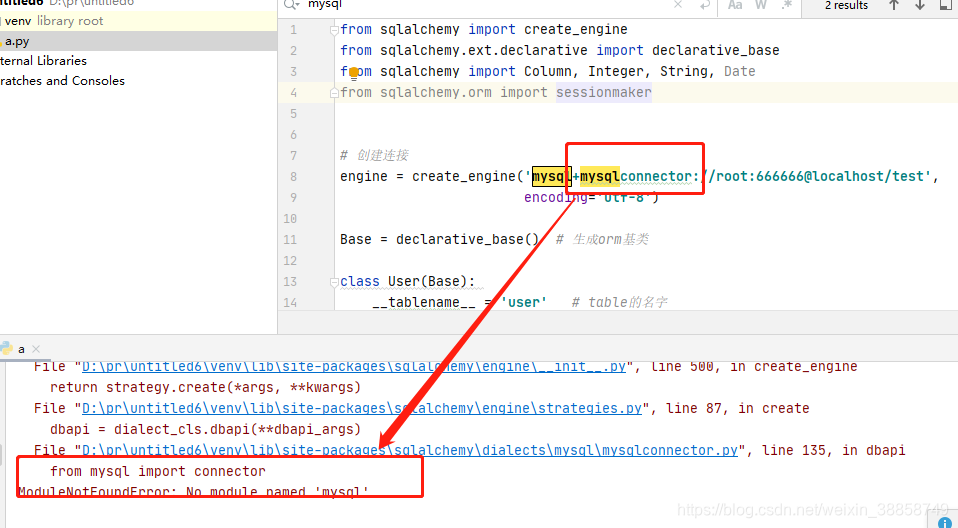




![Modulenotfounderror: no module named 'click' [SOLVED] Modulenotfounderror: No Module Named 'Click' [Solved]](https://itsourcecode.com/wp-content/uploads/2023/02/modulenotfounderror-no-module-named-click.png)
![Solved] No module named MySQLdb - YouTube Solved] No Module Named Mysqldb - Youtube](https://i.ytimg.com/vi/Ct-t-uLSBmc/maxresdefault.jpg)


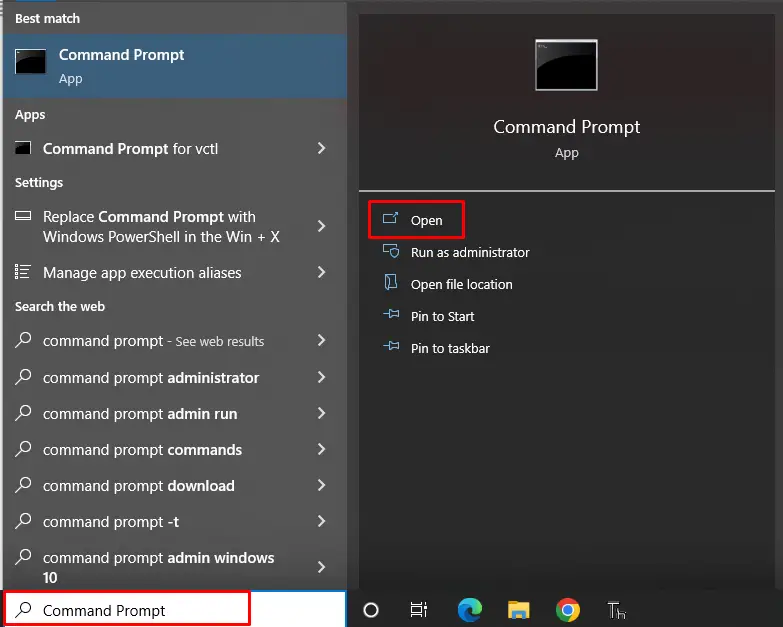
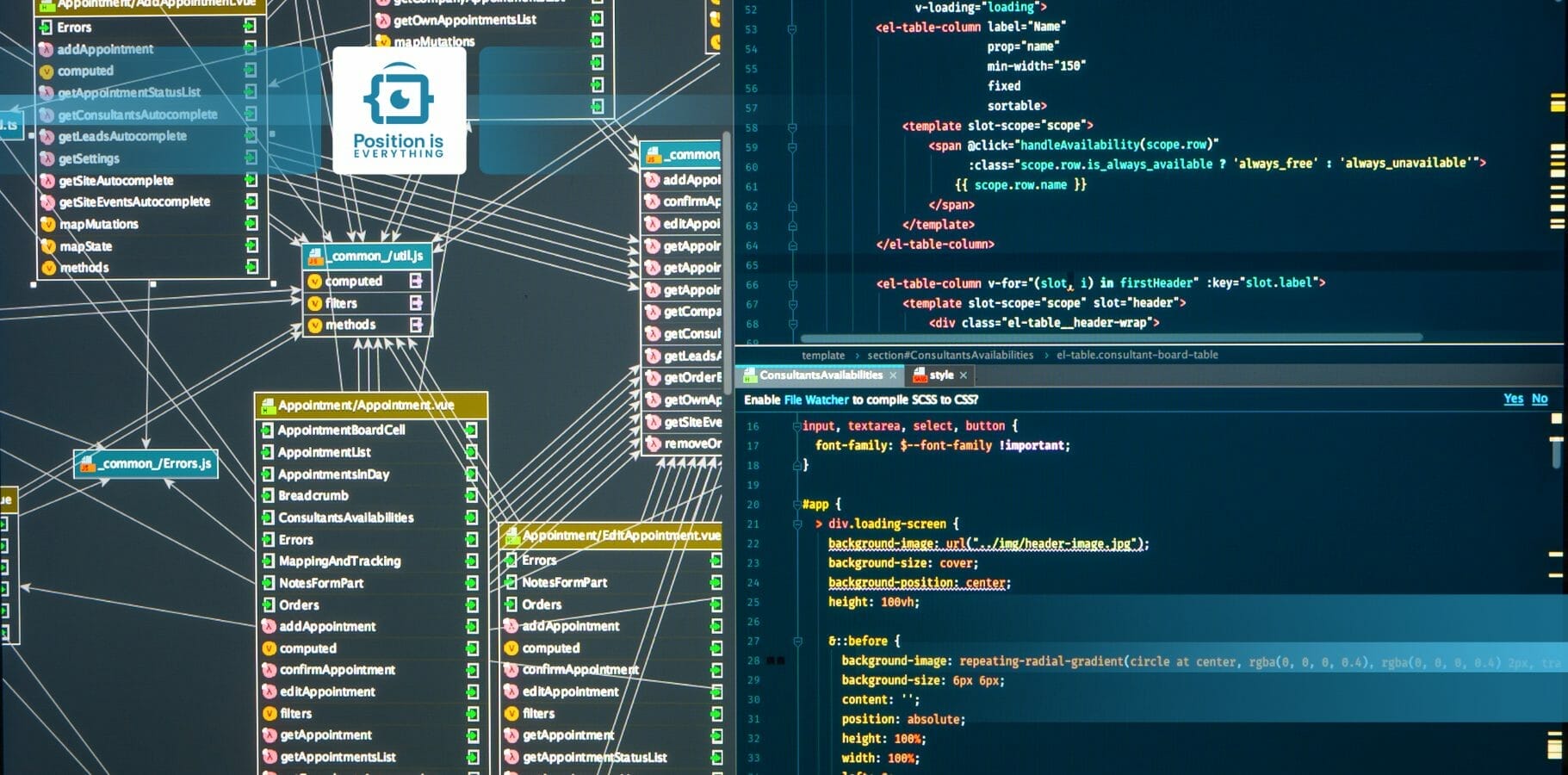
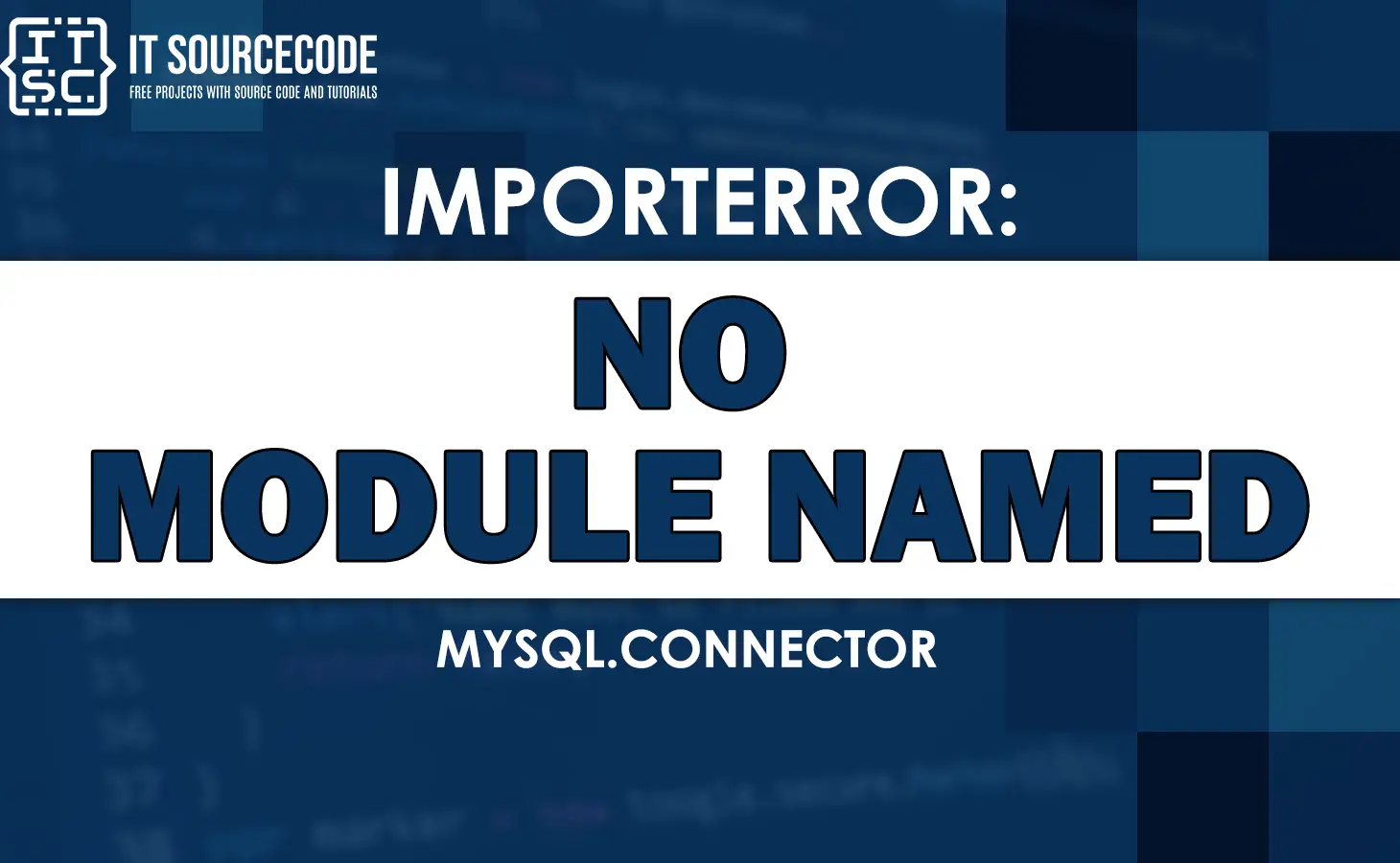



![ModuleNotFoundError: No module named 'mysql' in Python 3.10.0 (default, Nov 6 2021, 14:56:25) [GCC 4.8.5 20150623 (Red Hat 4.8.5-44)] on linux - Python Help - Discussions on Python.org Modulenotfounderror: No Module Named 'Mysql' In Python 3.10.0 (Default, Nov 6 2021, 14:56:25) [Gcc 4.8.5 20150623 (Red Hat 4.8.5-44)] On Linux - Python Help - Discussions On Python.Org](https://global.discourse-cdn.com/business6/uploads/python1/original/1X/e3e9085afa90eb688a45feef94009a54cc26d5fa.png)


![Solved] ModuleNotFoundError: No module named MySQLdb - Appuals.com Solved] Modulenotfounderror: No Module Named Mysqldb - Appuals.Com](https://cdn.appuals.com/wp-content/uploads/2023/02/No-module-named-MySQLdb-scaled.jpg.webp)
![Modulenotfounderror no module named pymysql [SOLVED] Modulenotfounderror No Module Named Pymysql [Solved]](https://itsourcecode.com/wp-content/uploads/2023/03/modulenotfounderror-no-module-named-pymysql.png)
![Import Error- No Module named Tensorflow found [SOLVED] - AskPython Import Error- No Module Named Tensorflow Found [Solved] - Askpython](https://www.askpython.com/wp-content/uploads/2022/10/Error-Message.jpg.webp)




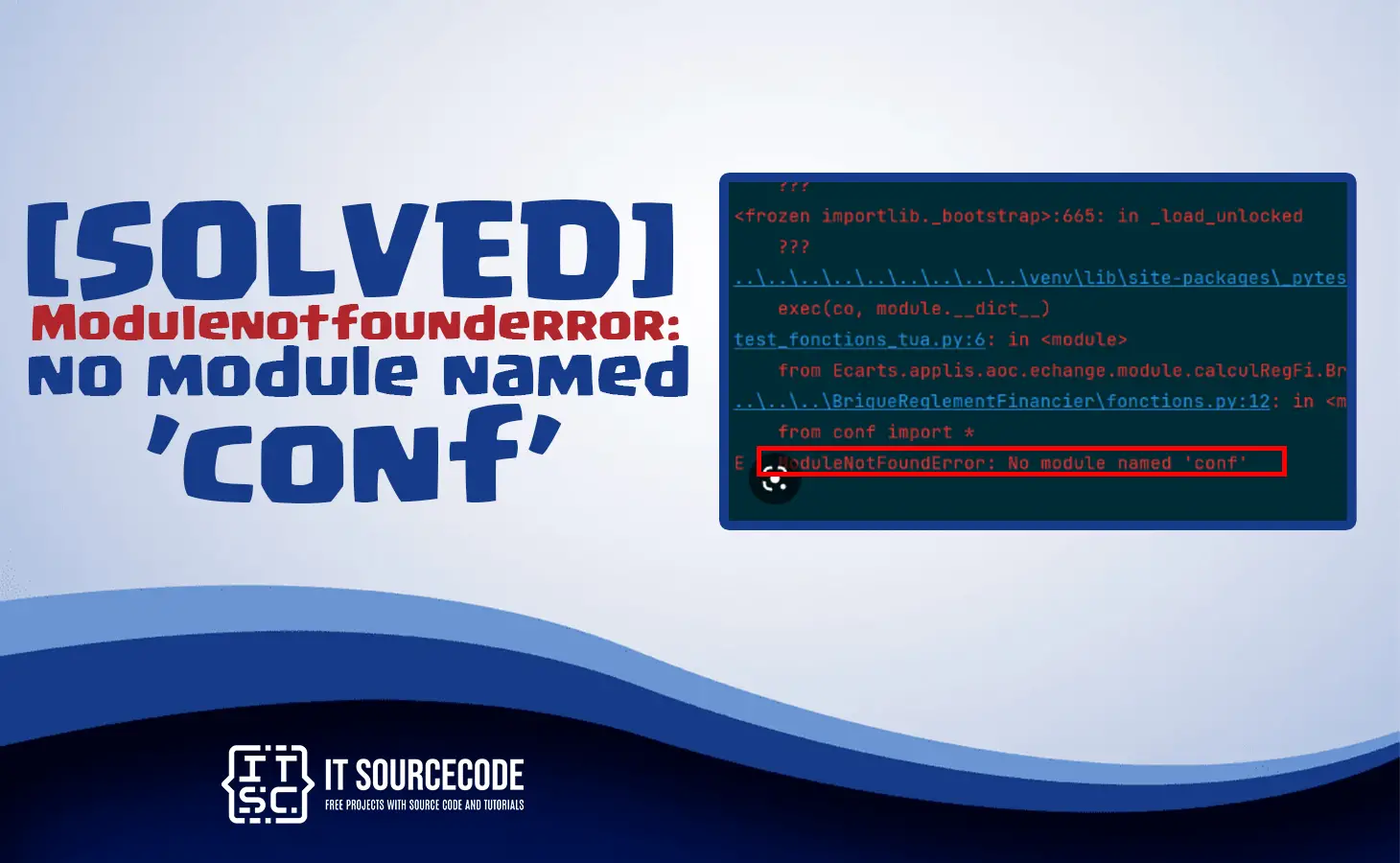




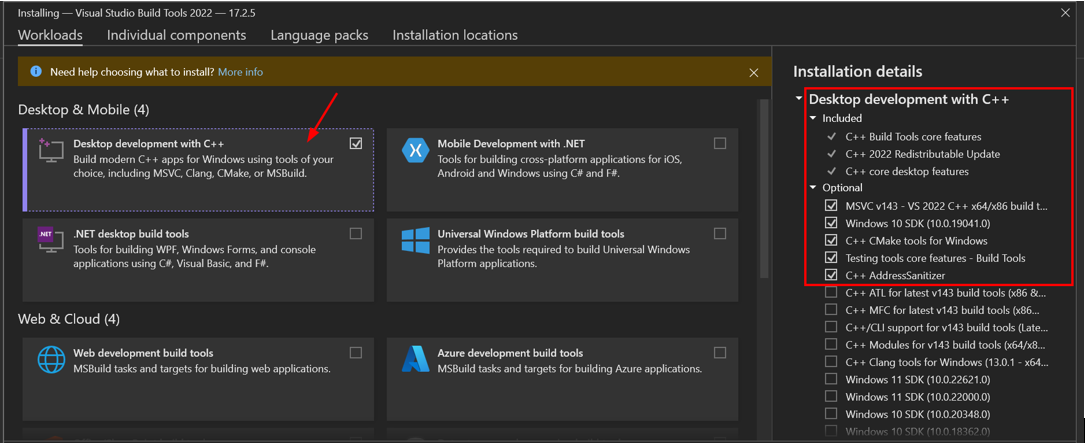

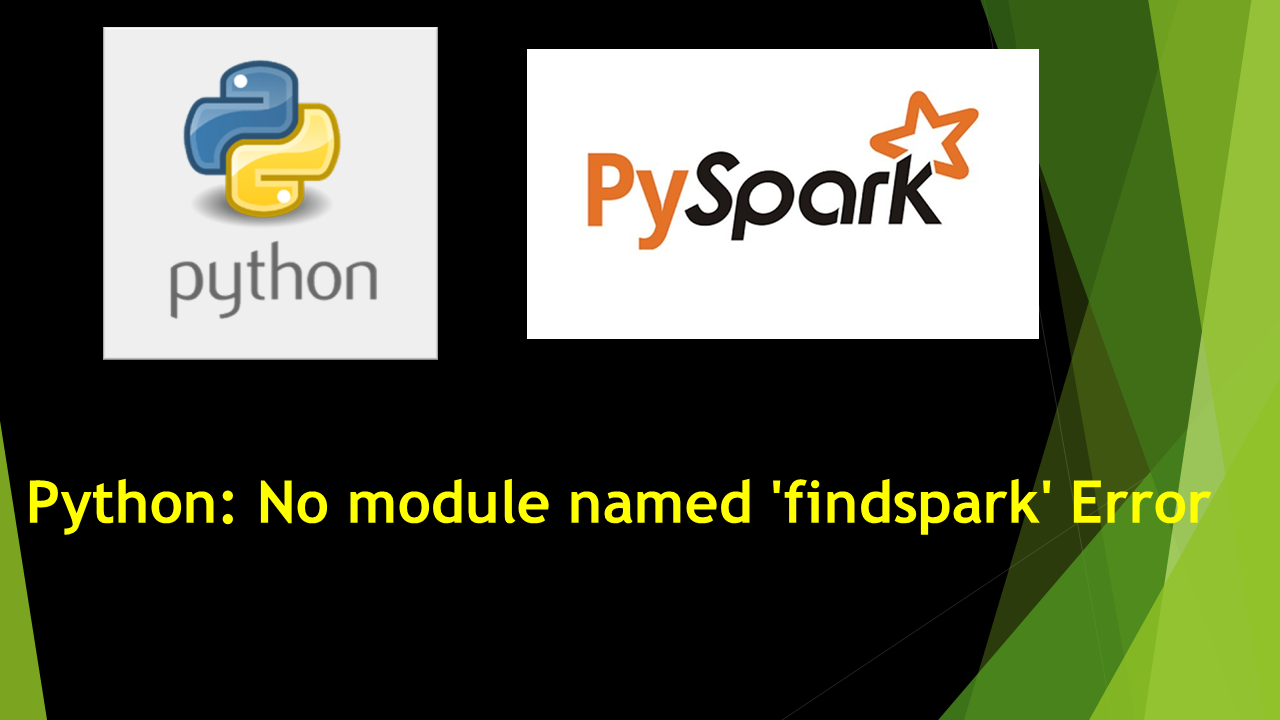

Article link: modulenotfounderror: no module named ‘mysql’.
Learn more about the topic modulenotfounderror: no module named ‘mysql’.
- ModuleNotFoundError: No module named ‘mysql’ in Python
- ImportError: No module named ‘MySQL’ – Stack Overflow
- Python ModuleNotFoundError: No module named ‘mysql’
- How to Install MySQL in Python 3 – Learning about Electronics
- Installing Connector/Python with pip – MySQL :: Developer Zone
- Python MySQL Database Connection using MySQL Connector – PYnative
- Mysql Connector Python pip install offline – Stack Overflow
- ModuleNotFoundError No module named ‘mysql’ in Python
- ModuleNotFoundError No module named mysql – Edureka
- ModuleNotFoundError: No module named ‘mysql’
- Python ModuleNotFoundError: No module named “mysql”